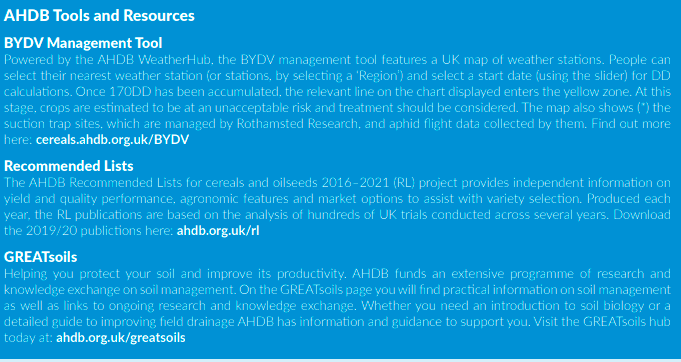Dr Jon Knight, AHDB Head of Crop Protection assesses the shifting political emphasis on environmental protection and the future for Integrated Pest Management
What is Integrated Pest management (IPM)?
The Food and Agriculture Organisation of the United Nations definition is as follows: Integrated Pest Management (IPM) means the careful consideration of all available pest control techniques and subsequent integration of appropriate measures that discourage the development of pest populations and keep pesticides and other interventions to levels that are economically justified and reduce or minimize risks to human health and the environment. IPM emphasises the growth of a healthy crop with the least possible disruption to agroecosystems and encourages natural pest control mechanisms. IPM has been adopted to varying degrees across most crops, cropping systems and regions of the world at different times and with different levels of success. There are now very few farmers, globally and in the UK, that do not practice at least some part of the IPM approach whether it be rotational cropping, monitoring or some other facet.
There are a number of drivers behind the need to drive wider and deeper adoption of IPM, many political but a number resulting from the long-term, widespread use of chemical control. Politically it is clear that UK government policy has shifted towards a greater emphasis on protecting the environment as exemplified by reference to IPM in the Government’s 25-year Environment Plan and reference to IPM in the Environmental Land Management Scheme (ELMS). Michael Gove and George Eustice have both said that there needs to be a greater focus on IPM and that protecting the environment is a primary aim of policy post-Brexit so the business as usual approach is unlikely to be sustainable.
The ever-evolving EU regulatory framework continues to put pressure on the availability of actives through the re-registration process, review of Maximum Residue Limits and the politicisation of what should be a purely scientific and rational process. The increasingly stringent requirement for the approval of new actives and registration of new products has led to a significant decline in new products coming to market due to finding chemicals that can comply with the regulatory requirements and the multi-million pound cost of producing the necessary data to support registration. Coupled with the rise in the number of cases of pesticide resistance in insects, weeds and diseases there is unprecedented pressure on the use of crop protection products.

It appears that one of the drivers behind all the talk around IPM is that there is an expectation that the quantity, frequency and potency of crop protection products needs to be reduced which has driven the banning of 3 neonicotinoid and many other actives. This means that the way that crop protection is delivered will have to change to more targeted, ’softer’ products that impact less on the environment. The key targets appear to be insecticides as their unintended impacts are perhaps easiest to see, although increasingly side effects of fungicides and herbicides are coming under scrutiny. Whilst new solutions need to be found there is a need to see what can be achieved by doing things differently with what we already have e.g. can we safely miss a spray from the fungicide programme? A farmer making this sort of decision requires concrete evidence to persuade them that altering programmes on the basis of better forecasting or diagnostics is a sensible thing to do and will not result in crop or financial loss. Developing new varieties that are better able to withstand the effects of pests and diseases and possibly weeds too is a key tool along with the use of soil management that can help to suppress soil borne pests and diseases.
Soil health and fertility is a fundamental part of IPM as good establishment of healthy and robust plants is key to resisting the impact of various pests. The use of min-till or zero-till can add substantially to soil health and is therefore a key tool for many, though not all, farms. There is much anecdotal evidence that certain practices effect a level of control on pests that needs to be examined closely and either confirmed to work or not. This comes down to having a better understanding of fundamentals such as the biology of the crop, the wider environment and of course the pests. The successful implementation of IPM is very knowledge intensive and farmers and advisers will need to be able to analyse information in order to develop strategies for crops both before and within the season. Any transition will therefore need a robust process of knowledge exchange and continued professional development.

